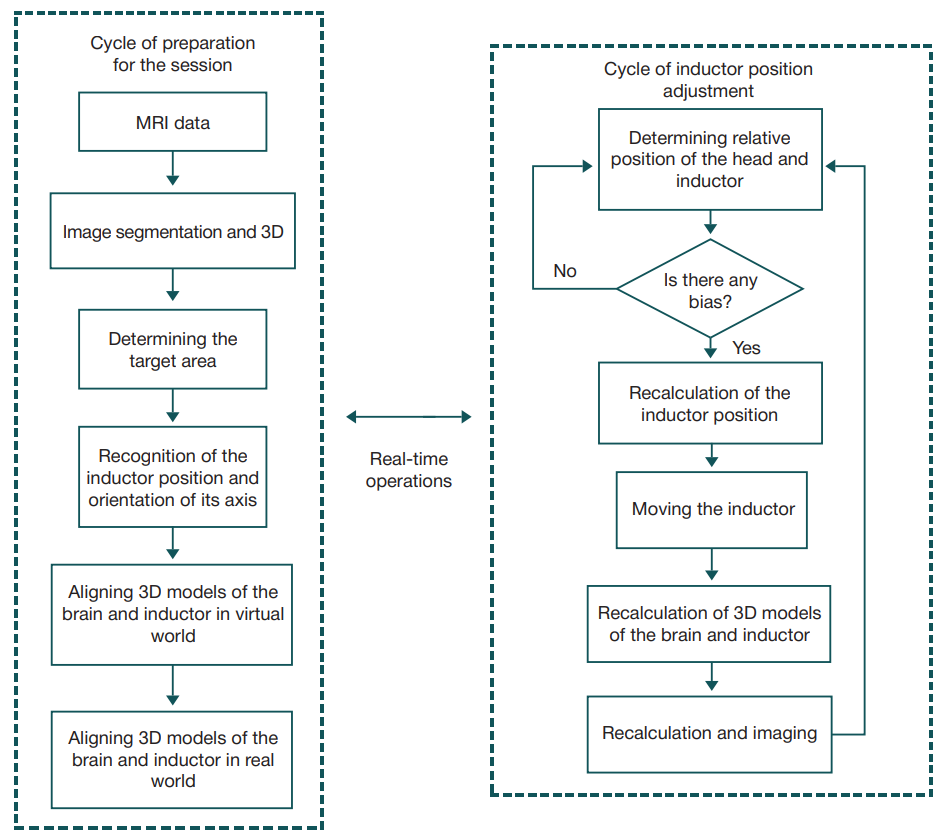
This article is an open access article distributed under the terms and conditions of the Creative Commons Attribution license (CC BY).
REVIEW
Navigated transcranial magnetic stimulation: brief review of engineering solutions
1 Tomsk National State University, Tomsk, Russia
2 Federal Research and Clinical Center of Medical Rehabilitation and Balneology of the Federal Medical Biological Agency, Moscow, Russia
Correspondence should be addressed: Ivan Yu. Zemlyakov
Rosy Luxemburg, 1, Tomsk, 634009, Russia; ur.liam@mez_y_i
Funding: the study was performed as part of the State Assignment 84.007.22.800 ”Construction and Clinical Approbation of Experimental Rehabilitation Robotic Hardware and Software Complex with Biological Feedback for Correction of Motor Deficits in Post-stroke Patients”.
Acknowledgments: we would like to thank N.G. Abdulkina, Deputy General Director at the National Medical Research Center of Rehabilitation and Balneology of FMBA of Russia, for support of the research team; A.B. Vorozhtsov, Vice-Rector for Science and Innovation at the National Research Tomsk State University, for assistance with the development of research in the field of medical robotics.
Author contribution: Zemlyakov IYu — manuscript writing, drawing conclusions; Zhdanov DS — review of experimental design for nTMS systems; Bureev ASh — review of the principles of construction and performance of the commercially available nTMS complexes; Kosteley YaV — search for information about the available nTMS complexes; Golobokova EV — search for information about the directions of development and designs for nTMS systems.
Compliance with ethical standards: the study was approved by the Ethics Committee of the National Medical Research Center of Rehabilitation and Balneology of FMBA of Russia (protocol № 1 of 6 July 2022).

